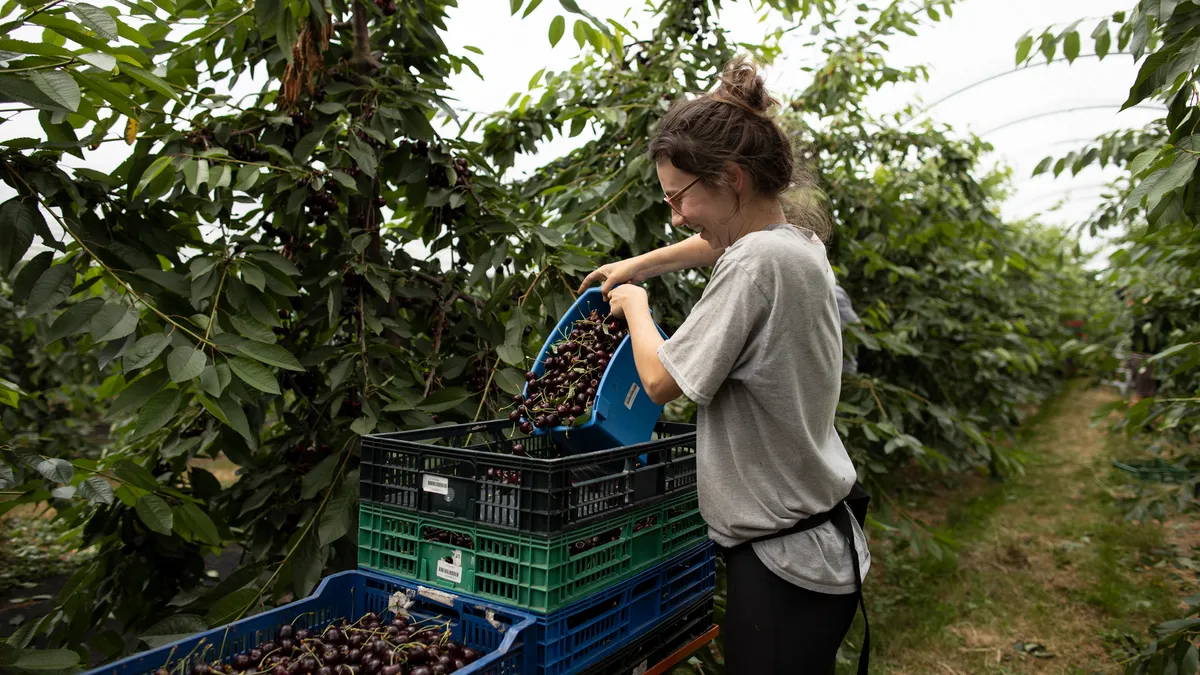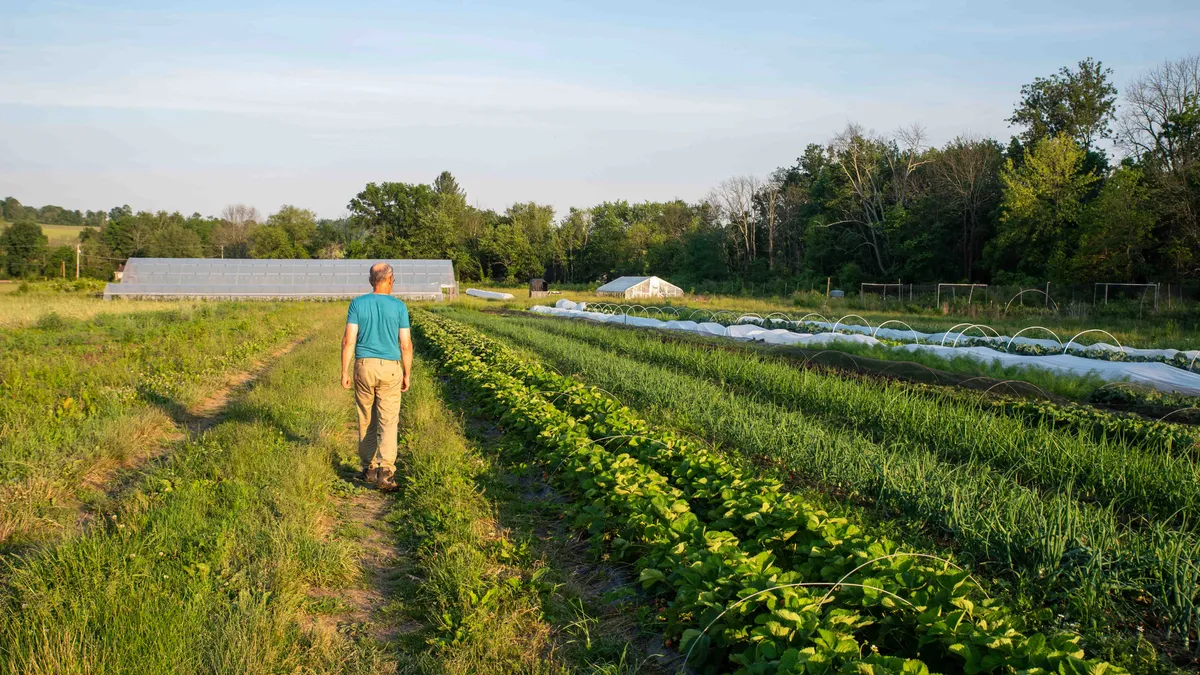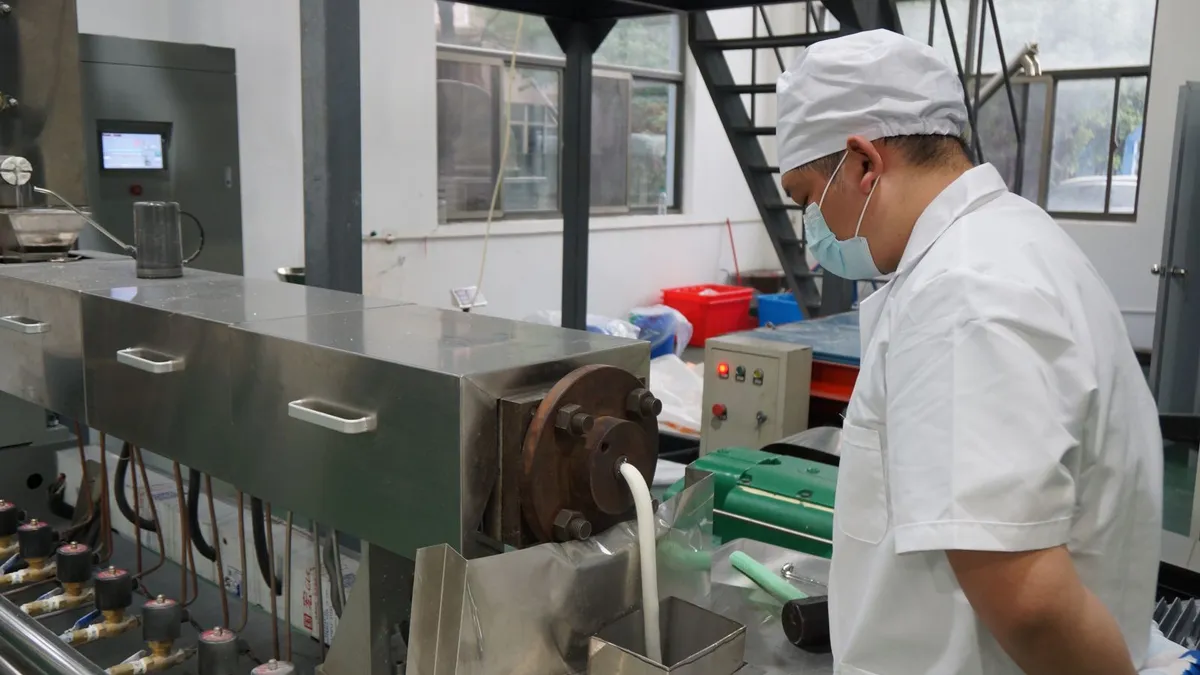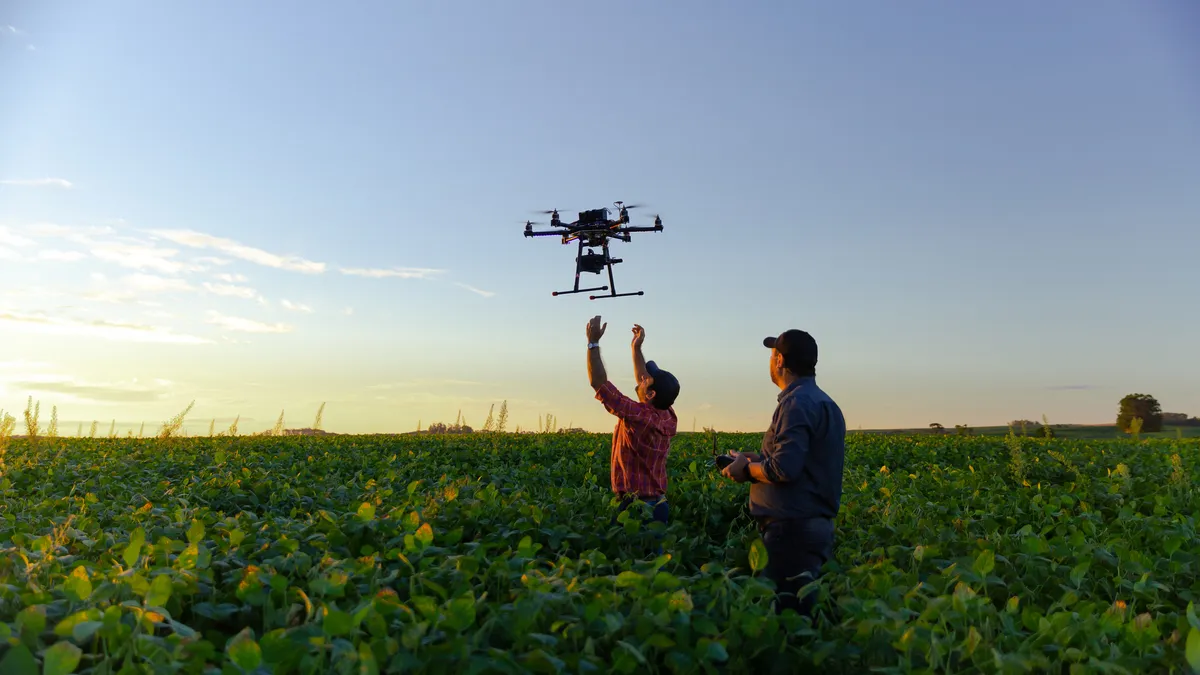Weather whiplash decimated profits for cherry farmers in 2023, leaving many growers with no choice but to leave the majority of their fields unharvested. But mounting losses over the past few years have been a wake-up call to the industry, and growers are looking for new ways to survive, including through the adoption of modern production techniques.
Cherry farmers have experienced economic losses in recent years due to a combination of climate change, the crop’s limited geographic range, and the fruit's inability to stay fresh in storage.
Ice storms, wildfire smoke and other unprecedented weather events have upended the cherry harvest in recent years across California and the Pacific Northwest. Unusually wet weather last year put California in direct competition with producers in nearby states, causing prices to plummet.
In Oregon, some cherry growers harvested less than 75% of their crop, with smaller farmers leaving more than half of their orchards unpicked. The massive glut has meant that some "cherry growers’ livelihoods are at risk of being lost altogether," Oregon Rep. Jeff Helfrich wrote in a request for assistance.
The story has played out across the country: In Michigan, cherry growers have been pulling up trees rather than continuing to lose money.
Road to recovery
Jon DeVaney, president of the Washington State Tree Fruit Association, said cherries are more vulnerable to climate stress partly because the crop is unable to store well for long periods of time compared to other specialty crops like apples and pears.
“As we saw last year, a change in weather patterns that shifts exactly when fruit is going to be harvested really can make for severe market losses because you don't have the ability to store and sell over time," DeVaney said. "So certainly that creates a lot of financial exposure around climate change.”
Cherry growers were granted emergency loans in March 2024 after the U.S. Department of Agriculture designated “natural disaster areas” due to excessive heat and warm weather snaps, offering up to $500,000 for producers to offset losses.
This disaster declaration for 2023 finally came in time for the 2024 season to begin, allowing growers to invest despite the disappointments and losses of the previous year.
In order to cope, producers have been getting creative with solutions in their orchards. In the Pacific Northwest, some are beginning to plant cherry trees in multiple locations, including areas where cherries have not been typically grown, to try to offset potential losses.
“Orchardists have been planting cherries at fairly high altitudes in places that were not traditional tree fruit production areas just to try to extend the season,” DeVaney said, adding that just a few hundred feet of elevation change can make a big difference on when cherries can be harvested.
Beyond planting techniques, DeVaney stressed the importance of a strong crop insurance program to mitigate some of the risks that can't be addressed through orchard management practices.
“Those kinds of tools are increasingly important,” DeVaney said. “We're looking forward to having a discussion with members of Congress around the Farm Bill reauthorization about how maintaining those risk management tools is really a high priority for growers in a more uncertain environment.”
What's in store for this year's cherry season?
Cherry issues have been ongoing for a few years. Losses in 2020 and 2021 in Michigan (where most of the nation’s tart cherries are grown) were particularly alarming, said President of the Cherry Marketing Institute, who added that the back-to-back poor seasons made history.
However, the institute’s Marketing Director Nate Chesher told Agriculture Dive that, while Michigan is experiencing an early spring, their growers have not been hit hard yet this year, and are optimistic for a better season.
“We've had minimal, minimal reports of any issues in the warm up,” Chesher said, adding that although the spring warmth is a few weeks ahead of schedule, it is not enough to cause alarm yet. “It's still early.”
This early in the season though, anything can happen. For this reason, specialists from the Northwest Michigan Horticulture Research Center have been closely monitoring the effects of frost damage on cherry buds.
“Cherries bloom before a lot of things, which is why they kind of become that poster child for climate related situations,” researcher Nikki Rothwell said.
Rothwell is working on protecting crops with novel techniques including an abiotic plant stress reducer, which she said is supposed to reduce water changes at the cellular level to help plants cope in less than ideal conditions like early thaws and freezes.
Those techniques could help as temperatures warm. Spring arrived earlier than normal this year, increasing the risk of potential crop damage. However, the impact has not been too significant, Rothwell explained.
“We had about 15% damage, but 15% damage at this point doesn't mean anything because you could have a full crop, even with that small amount of damage," she said.


















